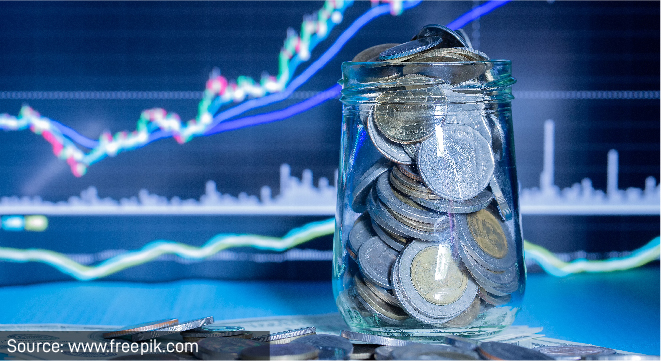The MSCI World Index had its worst start to the year since 2016, falling 5.3% month-on-month, as concerns over spiralling inflation and higher interest rates, and the tensions between Russia and Nato over Ukraine weighed on sentiment. At home, the FTSE/JSE All Share Index only just ended January in positive territory, with a 0.8% month-on-month gain.
Resources and financials were the top-performing sectors on the JSE in January, with the Resi-10 gaining 3.9% and the Fini-15 rising 3.4%. The resources index has gained 9.4% in the year to date, and financials have returned 7%.
The worst performers were industrials and listed property, with the Indi-25 and the SA Listed Property Index down 2% and 2.9% respectively.
Sasol was January’s best-performing share, up 33.2%. A higher oil price and refining margins, and a demand recovery in the chemicals market, propelled by the easing of lockdown regulations, contributed to a 31% year-on-year revenue jump in Sasol’s chemicals business.
The next-best-performing shares were Kumba (17.5%) and Sibanye Stillwater (15.1%).
The worst-performing shares in January were EOH Holdings (-28.1%), Harmony Gold (-17.2%) and AngloGold Ashanti (-12.7%).
Encouraging PMI and new vehicle sales
The Absa Purchasing Managers’ Index, which provides an early indicator of underlying economic activity, rose to 57.1 points in January after dipping to 54.1 in December.
New vehicle sales in January of 41 382 units were 19.5% higher than in the corresponding month a year ago, according to figures released by Naamsa.
Sales of passenger cars and light commercial vehicles were up 26.6% and 3.8% respectively over January 2021. Heavy trucks gained 9.6%, while “medium trucks” was the only segment to decline (-4.3%).
The market was up 22.1% to 464 122 units in 2021 compared with sales of 380 206 in 2020.
Headline inflation for 2021 now averages at 4.5% year-on-year, which is still in the middle of the SA Reserve Bank’s target band of 3%-6%. At its January meeting, the SA Reserve Bank’s Monetary Policy Committee again raised the repo rate, which is now at 4%.
US: Wall Street starts the year badly
Although US markets recovered during the last few trading days of the month, January saw Wall Street suffering its worst start to the year since the global financial crisis.
The blue-chip S&P 500 plummeted 5.9% in January – its biggest month-on-month drop since the start of the pandemic. The Dow Jones ended the month 4% lower and the tech-heavy Nasdaq fell by 10.1%.
Consumer prices accelerated to 7.5% year-on-year in January, exceeding market expectations of 7.3%. This was the highest year-on-year advance since February 1982, and is attributed to robust demand, labour shortages and supply bottlenecks. The biggest contributors remain energy and gasoline prices, which advanced 27% and 40% respectively compared to a year ago.
Core inflation, which excludes volatile energy and food prices, advanced to 6%, also beating market expectations.
The latest print continues to point to inflationary pressures and supports the Federal Reserve’s more hawkish stance regarding US short-term interest rate hikes. As a result, the market is now pricing in a full percentage point hike by July.
FTSE 100 up, DAX and CAC down
The UK’s blue-chip FTSE 100 ended 1.1% higher month-on-month. In January, official statistics showed that UK GDP surpassed pre-Covid levels for the first time in November, expanding 0.9% month-on-month. In December, UK inflation hit its highest level, 5.4%, in 30 years.
In Europe’s largest economy, Germany, the DAX closed January 3.4% down, while in the eurozone’s second-biggest economy, France, the CAC Index fell by 3%.
Quarter-on-quarter, preliminary seasonally adjusted eurozone GDP rose 0.3% in the fourth quarter of last year (in line with market expectations), while year-on-year, seasonally adjusted GDP climbed 4.6% in the fourth quarter after a 3.9% gain in the third quarter.
Asia: Chinese manufacturing output falls again
Hong Kong’s Hang Seng Index was up 2.3% in January, the Shanghai Composite Index sank by 7.6%, and Japan’s benchmark Nikkei closed the month 6.2% lower.
China’s Caixin General Composite Purchasing Manager Index dipped to 50.1 in January, down from 53 the previous month, as manufacturing output fell again, despite a minor increase in services activity. The growth in China’s services sector slowed to a five-month low, owing to new restrictions to combat Covid-19 in some parts of the country.
Chinese banks extended a record CNY3.98 trillion in new yuan loans in January, exceeding market expectations of CNY3.69 trillion and more than three times the amount in December. In addition, total social financing, which is a measure of credit and liquidity in the economy, accelerated to CNY6.17 trillion, up from CNY2.37 trillion in December and exceeding consensus of CNY5.4 trillion, as policy support ramps up.
Compiled using data provided by Brenthurst Wealth and Citadel Wealth Management.



